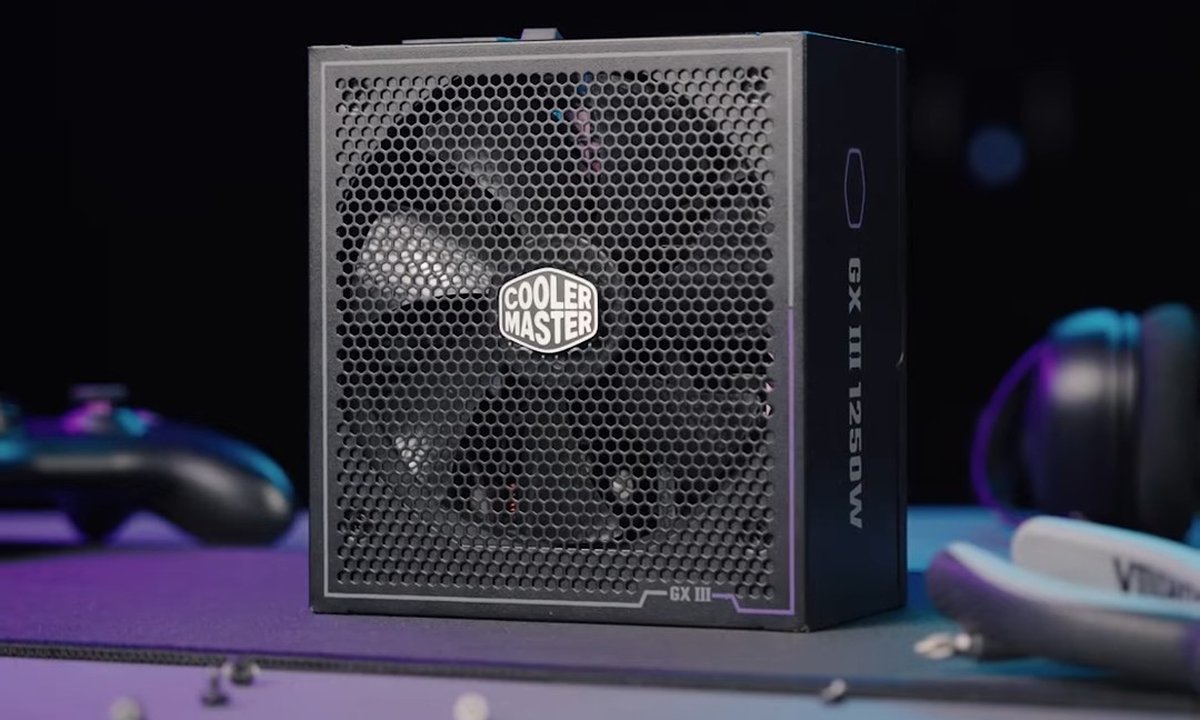Power supplies are one of the most important components of any computer, but they are often forgotten by those who assemble these machines. More than just a simple device that converts energy, the power supply is responsible for providing stable power control for the computer and preventing a series of failures.
To better understand this component TecMundo He spoke with Anderson Viana, head of global marketing at Cooler Master. Anderson emphasizes that this hardware has a number of features that ensure quality power transfer to the computer, such as converters and capacitors to prevent serious errors that could burn the computer.
A power supply, also known as a Power Supply Unit (PSU), is a component responsible for receiving and converting electrical energy from an outlet.
This alternating current coming out of the socket is converted into direct current, then passed through some kind of filter to remove irregularities, regulated and only then distributed to other components of the computer.
In this guide, we explain how to buy the best possible energy source, as well as give you some tips to save money and avoid falling into the traps.
Choose the right power
Since it is electronic equipment, all components of the computer require a certain amount of energy. The parts with the highest consumption are the processor and the graphics card, if separated. These two pieces of hardware are the main guide to understanding the power the energy source needs to power the entire system.
Electrical power is a physical quantity, measured in Watts (W), that corresponds to the energy consumption over a certain period of time. Therefore, it is common to think that the more power a source has, the better. However, this is a misconception.
Anderson Viana points out that the first big mistake consumers make is not knowing how much energy their components consume. This is why people tend to think that, for example, a gaming PC needs very powerful sources like 700 or 800W to run well.
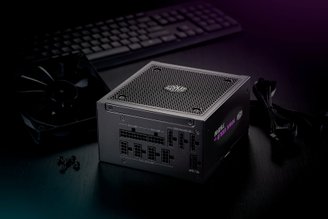
In reality, a mid-range configuration with components like the Ryzen 5 7600X, GeForce RTX 4060 Ti, 16GB DDR5 RAM, and an NVMe SSD consumes around 350W.
An even simpler calculation is to take the consumption of the 4060 Ti (160 W) and add it to the maximum consumption of the processor (between 105 and 142 W), which produces about 300 W. As the Cooler Master expert points out, the memories, SSD, fans are very low.
Manufacturers rely on ‘margin of error’
It is always good to add between 50 and 100 W as a margin of error, which makes 400 W the ideal supply for this PC. On the other hand, manufacturers such as Nvidia and AMD also include a supply in the specifications of each of their recommended video cards — in this case 450 W. This is because companies do not know what the user’s computer components are and ‘exaggerate’ the demand for everything to work well.
“The manufacturer is right. They don’t know what processor the user is using, they don’t know anything. So they exaggerate this specification, because if the consumer buys a bad product, at least there is a chance that nothing will happen to the card or their computer,” says the global manager of Cooler Master.
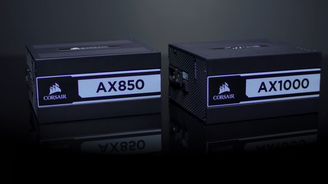
According to Anderson, the ideal thing to do is always research the consumption of each ingredient individually on reliable websites and do a quick calculation as done above. Although brands always use a high safety margin, checking the official websites of the manufacturers is also highly recommended.
The expert emphasizes that users do not need sources with absurd power. “There is no way a source with that many watts can be cheap and high-quality at the same time,” Viana emphasizes. The idea is that the user can calculate the GPU + CPU energy consumption or do it directly via sites like the Extreme Outer Vision PSU Calculator.
Seals and certificates
One of the points to consider when choosing a good energy source is the certificates of these models. These certificates, usually called 80 Plus and Cybernetic seals, are an indicator of the quality of the energy the source draws and how efficient it is in doing so.
The 80 Plus seal produced by CLEAResult is the most common in the industry and is found in basically all sources on the market. Cybernetics is another independent company that does font testing, but it is not as popular yet and has different methodologies. In this guide, we will use the 80 Plus seal as a parameter to make it easier to understand, which is divided into the following categories:
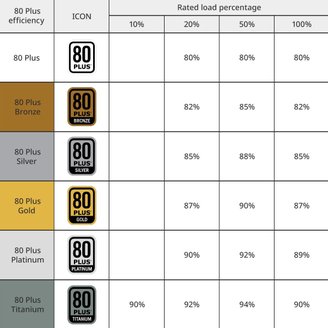
To make it easier to understand, the closer to the Titanium seal, the more efficient the source. Anderson Viana gives the example that the 500W 80 Plus Titanium power supply has 90% efficiency, meaning that if the user consumes the full 500W of the product, the power supply will deliver that amount of energy with 90% efficiency.
This logic continues with all the sources of power and all the seals in the table. “What is this 90% efficiency? It takes more than that to give you 500 W because it loses 10% efficiency. This conversion of heat and energy allows the source to have an efficiency of XYZ level,” explains the expert.
A source with the 80 Plus seal, even if it is in the Bronze category, is an indication of greater reliability. The more efficient the source, the less energy will be used and the less unnecessary electricity will be wasted. After all, the more efficient the source, the lower the electricity bill at the end of the month, as the product will draw the right amount of energy from the socket.
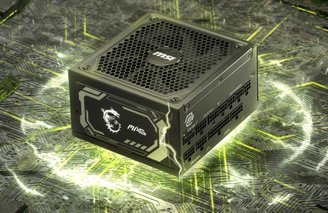
However, Cooler Master’s global manager points out that having the 80 Plus seal does not mean that the power supply is good. In fact, many sources have this seal, but their construction, noise, internal components, warranty and other factors cause the product to fall short of expectations. Certifications are one thing to consider, but they do not guarantee a quality product on their own.
Connectors and cables
Although it is very rare to find non-standard sources, it is important to know the connectors that this component has. A power supply has cables with connectors that have different pinouts for each computer component. Take a look at this:
- ATX cable (motherboard): 20 + 4 pins;
- Processor cable: 4 + 4 pins;
- SATA cable: To connect to SSDs and HDs with SATA protocol;
- Molex cable: four-pin cable used for various equipment in a PC, such as some fans;
- PCI Express cable: 6 or 6 + 8 pin. Used to connect video cards.
Generally, each source should have at least five of these cables, but some mid-range and high-end models include multiple PCI Express and processor connections for enthusiast builds or products that require a lot of power.
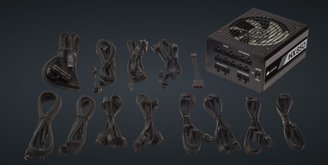
Newer graphics cards, such as Nvidia’s RTX 40, use a new connector called 12VHPWR. This connector is found on high-end GPUs and only appears on mid-range or premium sources; it is necessary for transmission up to 600 W. Even if it is not mandatory, it can be interesting to check if the source has this cable, just for the sake of longevity and to provide good service for the future.
Cable modularity
Sources have differences in terms of cables as well as connectors. These components are divided into non-modular and modular, the only difference being that in the first case the cables are connected to the source, while in the second the user can plug in the cables he wants to use.
Non-modular sources are cheaper, but they create an ugly mess of cables in the case and usually don’t have the best finish. Modulars are more refined products, with nicer cables installed by the user. If you don’t plan on using GPU or SATA connectors, unplug them and your setup will be free of loose cables.
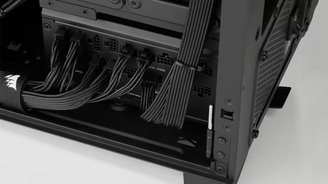
But as the Cooler Master expert points out, a modular power supply is not synonymous with quality. “We just say whether the cable is modular or not. But sometimes, depending on what you’re going to do, you’re going to plug in all the cables and it doesn’t matter if it’s modular or not. […] “But I tell people not to assume that a modular supply is better than a non-modular supply. That’s not always true. There are many brands that sell modular power supplies, but the product is bad,” Anderson concludes.
Guards
More than just a power converter, a power supply protects your computer. Quality power supplies have internal components that prevent your computer from shutting down in the event of electrical current changes or power surges.
Because these are highly volatile products, a PC’s components need to be powered safely, Viana says. One of the PSUs’ protection mechanisms monitors how much power is being drawn from the outlet and shuts down the supply if it detects any problems.
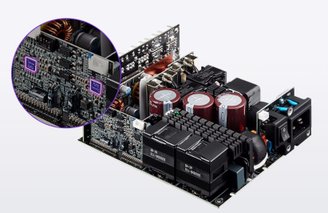
Sources without the proper components can consume more energy than necessary, resulting in higher electricity bills. Furthermore, lack of monitoring can cause the product to send the wrong energy, risking the PSU itself to burn out, as well as eventually damaging other components of the computer.
Buy from trusted brands
Just as you should not buy a smartphone or TV from a brand of dubious origin, it is strongly recommended that you only buy resources from well-known companies. This is because the development and quality of fonts is very complex, so not any company can create good products in this area.
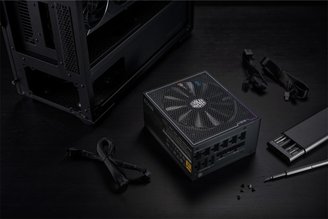
Cooler Master’s global manager reveals that the minimum credentials users need are a good brand. “Look for a brand with a history of good products. That’s different from a brand that comes out of nowhere and makes mice and keyboards and all of a sudden starts making fonts. Sometimes you don’t even have the benchmarks you need to look for,” concludes Anderson Viana.
A reliable brand also provides a quality guarantee. It is common for 80 Plus Bronze sealed input sources to have a warranty of around 3 years. Mid-range and high-end models come with a 5 to 10-year factory warranty in addition to better cables, high-quality internal components, and good efficiency.
Brands from trusted sources:
- Cooler Master;
- Pirate;
- NZXT;
- Gigabyte;
- ASUS;
- Lian Li;
- Thermaltake;
- XPG;
- Puma;
- MSI.
Dimensions and format
Finally, the formatting part is perhaps the simplest, as it is very similar to motherboards. It is important to pay attention to this aspect, as different font formats may not fit in your cabinet. First, check the case specifications and see if the PSU fits the case. Take a look at the main types:
- ATX PS/2: the most popular font format. Dimensions: 150mm (W) x 86mm (H) x 140 (L);
- ATXPS/3: Dimensions: 150mm (W) x 86mm (H) x 100mm (L);
- Effect: Compact fonts. 100mm (W) x 63mm (H) x 125mm (L)
A good power supply is not limited to just so many watts in the specifications. It is a good idea to research this topic and follow the points in this guide as these are great steps to buying a powerful and reliable power supply for your machine.
KaBuM Coupon
Are you looking for a power supply for your PC? Take advantage of the KaBuM coupon and save money on purchasing hardware and peripherals!
Source: Tec Mundo
I am a passionate and hardworking journalist with an eye for detail. I specialize in the field of news reporting, and have been writing for Gadget Onus, a renowned online news site, since 2019. As the author of their Hot News section, I’m proud to be at the forefront of today’s headlines and current affairs.






